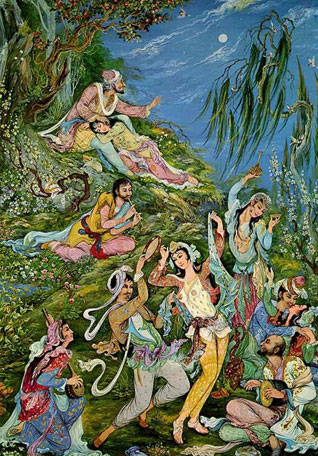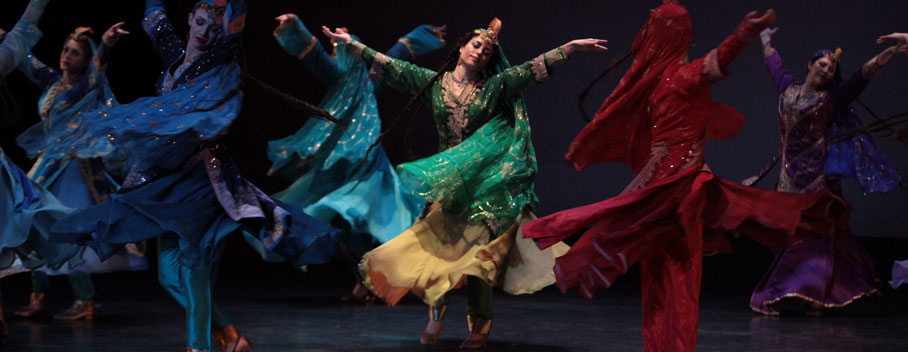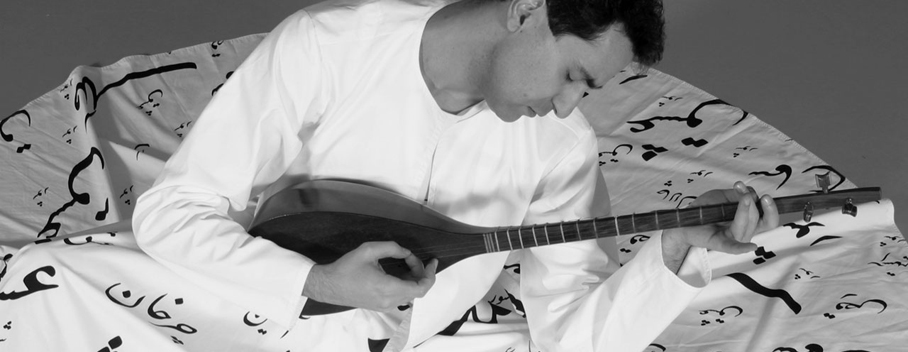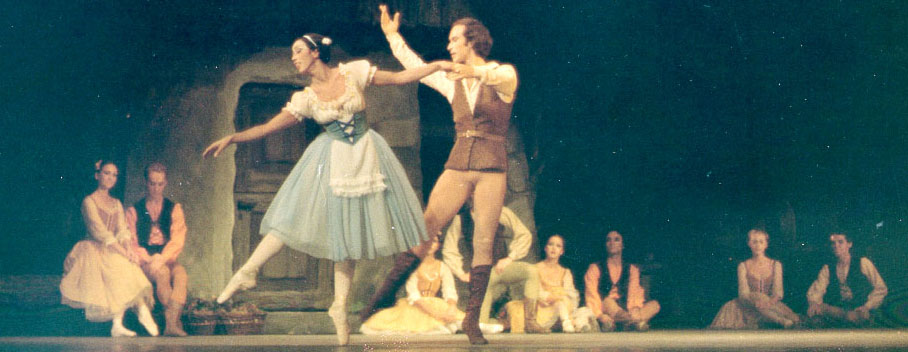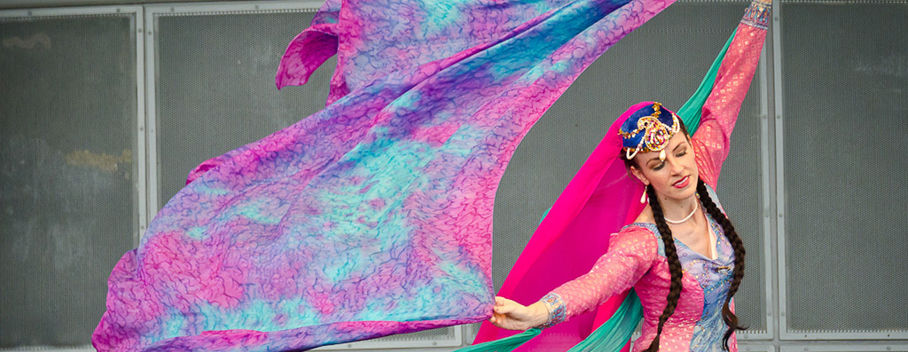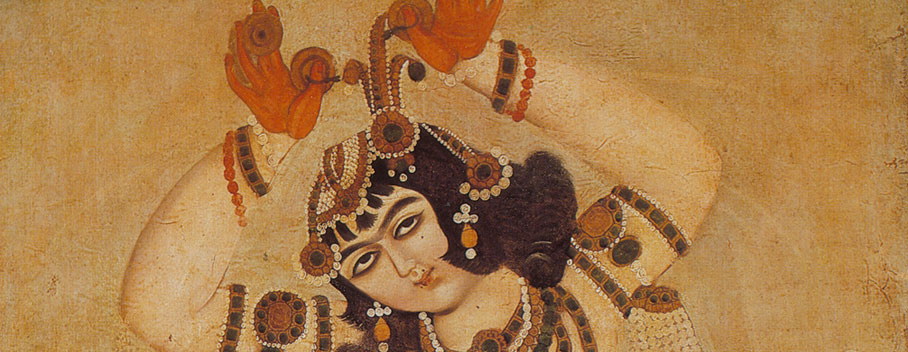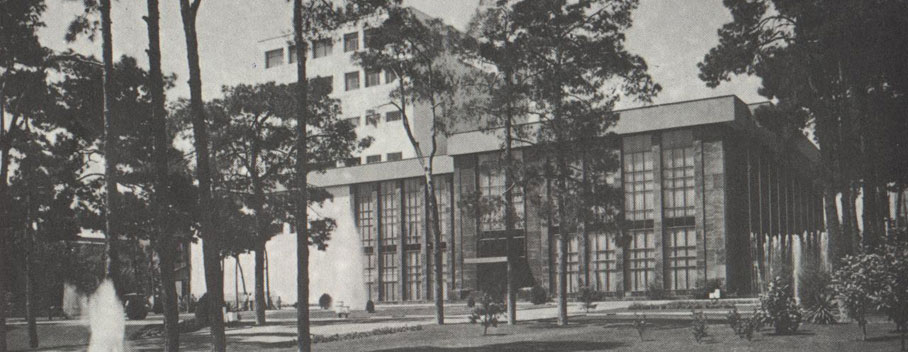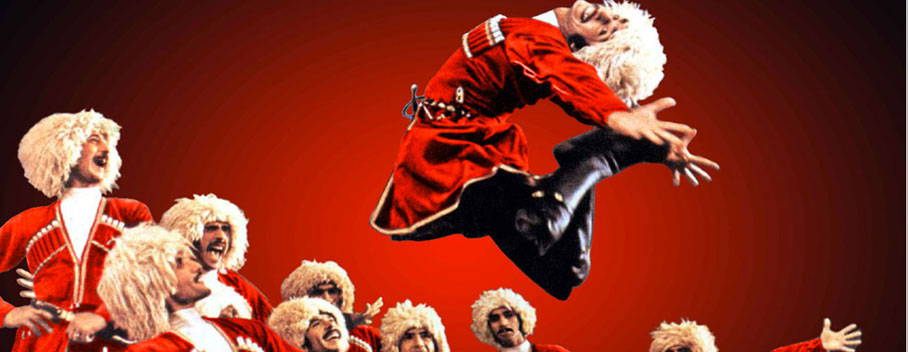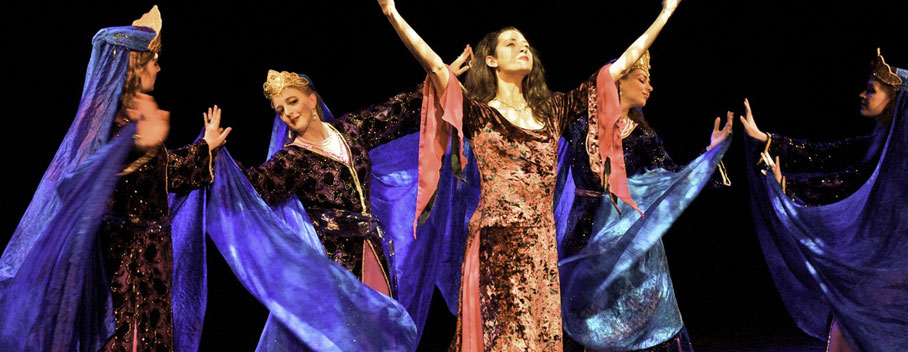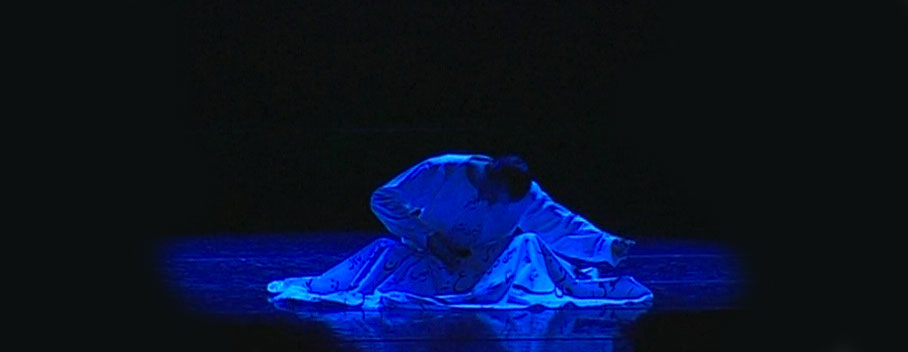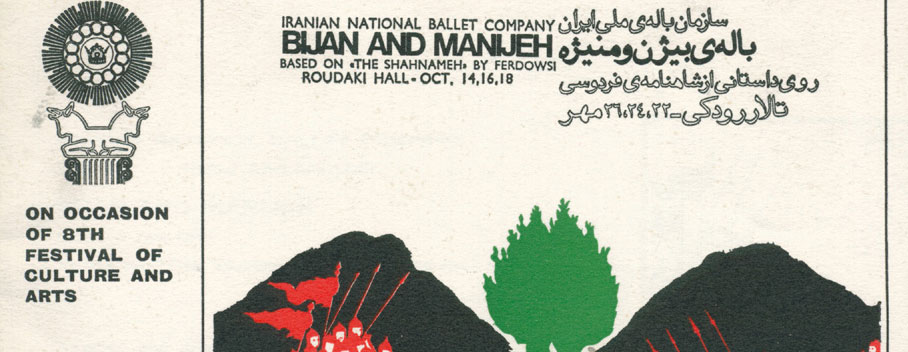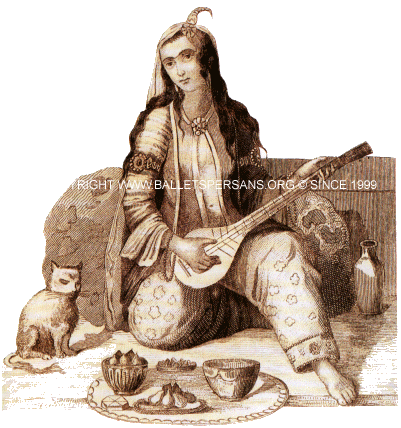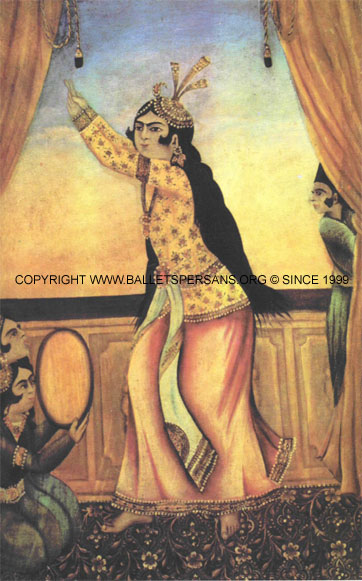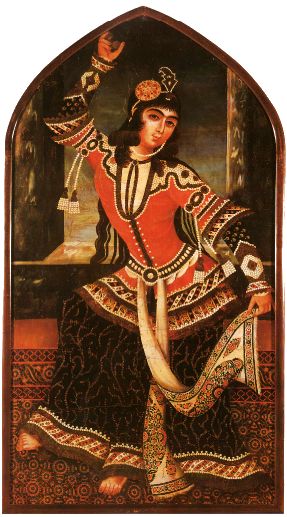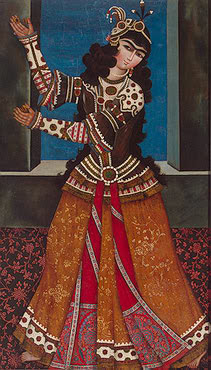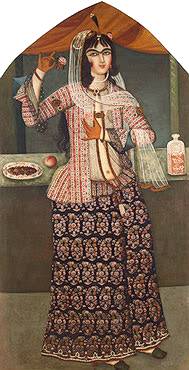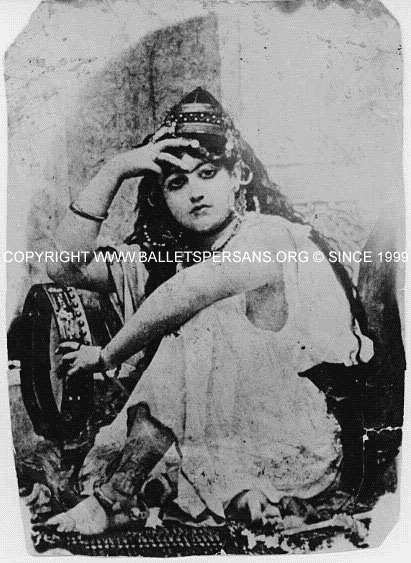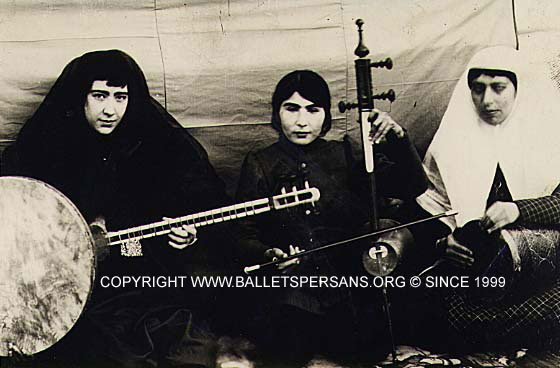"Iran can be considered as one of the ancient world’s empires, which methodically and actively was devoted to the development of the art of dance. For this ancient nation, dancing has been an important social phenomenon and a religious ritual."
- Nima Kiann
ISLAM FORBIDS DANCING
Dance as a respected social behavior and as a part of the Persian culture existed and was elaborated through millennia; alike the antique dance of China, Greece and India until the Arabs invaded Iran. Their new religion prohibited dancing, and this practically implied the extinction of the antique Persian dance traditions.
The English dance historian, Lilly Grove, writes in her book “Dancing” which was published in 1895: “Mohametan views concerning music and dancing have greatly narrowed the circle of amusements in Persia. Dancing girls were numerous at Court until the reigning family ascended the throne of Persia; but at present the dance is given up to women of low condition and of slack morality, or to young boys dressed as women.”
Centuries of political instability, civil war and occupation by foreign powers, first Arabs and then Mongols resulted in a slow but steady disappearance of some Persian prehistoric heritage like the dance traditions.
Beside the religious prohibition, a historic tragedy and a national humiliation was the other important reason for Iranians, not to appreciate the art of dance for a long time to come. After the fall of Persian Empire, when the country was torn into pieces, Iranian women and young girls were slaved and soled in the salve bazaars of the new conquerors. They were forced to sexual intercourse and to erotic dances for pleasing these uncivilized rulers.
One corrupted caliph, Harun ul-Rashid, had approximately three thousand musicians and dancers in his palace who were at his disposal, among them many Persians. This although dance and music was strictly forbidden according to the Islamic instructions. A particular Iranian family named as “Mowseli” has been mentioned as the responsible for the caliph’s entertainment.
This historic shadow and national dishonor, for a people who were losing their cultural identity and human dignity, characterized their view of dance during centuries to come. No Iranian man wished to see his woman dancing in the presence of a stranger. This is why the attitude of Iranian Muslims toward dancing has been of a more conservative nature compared to other Muslim countries throughout the history.
SUFISM AND RISING OF SAMA’ DANCE
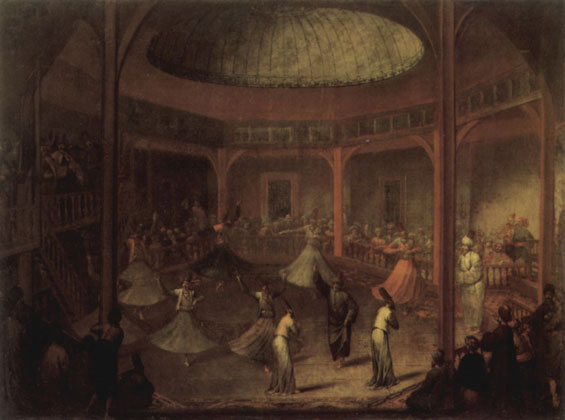
By and by dancing appeared in the Persian mystic and Sufi faith. It took a central place in literature and was performed by religious men. Hafiz (d. 1388), Saadi (d. 1292) and Mevlana (d. 1273) were three great Persian poets who extolled dancing in their poems and used this art form as a symbol of the power of life. Sufism recommends dancing as a spiritual instrument to “become one with God”, which is the final goal in this faith.
One of the great spiritual masters and poetic geniuses of Persian literature is Jalal ud-Din Rumi, known as Mevlana. He is the most appreciated Sufi of all times, who made dancing a central element in his Sufi doctrine. He was born in Balkh, in the province of Khorasan in the northeast of Iran and flew to the west, away from the invasion of Mongols in the 12th century. He finally resided in the city of Konya where his mausoleum is located today.
It was there he established and developed his order with strong portions of spiritism. Due to the Sufi instructions he stands in the middle point of this belief as the great Sheik, the “spiritual leader” in connection with the hidden, divine dimension and guides his followers “upwards” to the “Immortal”.
The goal will be achieved by practicing a strong ecstatic ritual performed with music and dance as the central strain. This charismatic performance is called Sama’ and represents a spiritual rapprochement to the “Creator” and is practiced until today.
Jean Börlin namely choreographed his ballet “Whirling Dervishes” for ”Les Ballets Suédois” in 1920:s, inspired by this great Sufi faith and its ritual.\
DANCE, A POPULAR ART IN QADJAR COURT
The only original form of Persian dance in its existing condition, which has survived throughout the centuries, is the folkloric dance of various Iranian focal groups and in particular the nomads. Few dance shows occurred in bigger cities and in public, not at least because of the religious belief and the Islamic prohibition in a strongly traditional, religious and undeveloped society.
But it was different in the royal court of the Qadjars. Old dance traditions can be found there, especially among Qadjar women, even if the art of dancing had no popularity among ordinary people.
However, the rise of the Qadjars in 1796 meant a liberalization of people’s attitude toward dancing, although this art form remained in the monopoly of the royal court. There are illustrations such as both splendid paintings and texts in form of memoirs and official reports emphasizing the popularity of these dances in court and among the elite and bourgeois families.
Thus dancing became much in vogue and a social phenomenon, usually performed during diverse entertaining programs like coronations, marriage festivities and ceremonies of Norouz (the Iranian new year celebration).
In 1998 an art exhibition was arranged in the Brooklyn Museum in New York, USA, where paintings from the Qadjar era was shown. Some of these paintings portray dancing court women at festivities or professional female dancers who entertain the guests.
As mentioned, the Iranian folkloric dance was more developed outside the big cities. Lilly Grove, who I quoted earlier, has reported about a kind of a Tarantella looking dance, which existed in Buzabatt, near the city of Kashan and which looked similar to the Italian one in Sicily.
Further she writes, “In Persia the student of the history of the dance meets with the same difficulties in his investigations as he does in Scotland. The religion of the country has endeavored not only to suppress the pastime, but also to forbid any record of it.”
Another English dance researcher, E. G. Browne, who traveled in Iran and studied the Persian dance in late nineteenth century, has mapped folk dances in the province of Khorasan and Kurdistan. “Yet in some remote provinces of Persia there are dances performed by peasants at night, and at Tehran itself Georgian girls are employed as dancers”.
He speaks with admiration of the dancing boys of Persia; he praises their “elaborate posturing, which is usually more remarkable for acrobatic skill than for grace, at any rate according to western ideas.”
Thanks to the care and efforts of some Iranian minority groups, such as Iranian Armenians and Jews, a fraction of what is called Persian dance has been saved throughout the history among ordinary people. Obviously, several Iranian artistic and cultural heritage including the art of dance would have been lost, if it was not for the devotion of these people.
We Persian Iranians owe a debt of gratitude to our minorities, who in some cases have lived in Iran for thousands of years, because our cultural heritage thus survived difficult times of turbulence and social decadence. Any tradition of Persian dance, which could have been saved, has been preserved through these minorities.
Copyright © 2000 Nima Kiann
All Rights Reserved.
This material is the intellectual property of the author.
No part of this publication may be reproduced, stored in a retrieval system, or transmitted, in any form or by any means, without the prior permission in writing of the author.
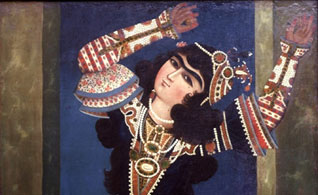
![]()
Visit Nima Kiann’s Forum of Persian And Middle Eastern Dance to find more articles.
![]()
